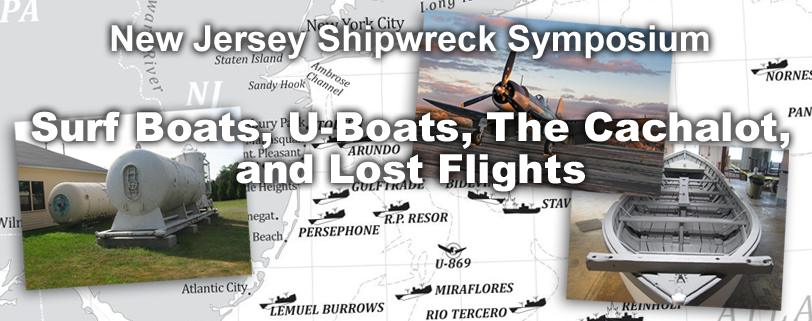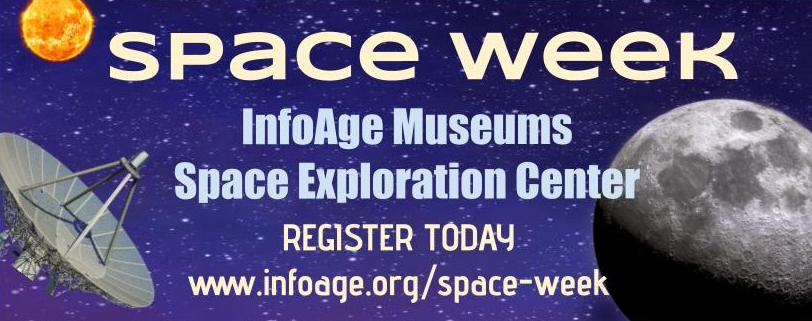The History of InfoAge Science & History Museums
An Early Sputnik Diary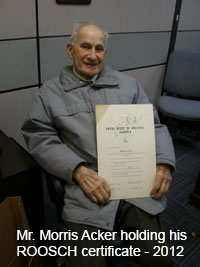
OLYMPUS DIGITAL CAMERA
An Early Sputnik Diary
From an Early Sputnik Diary of HAROLD A. ZAHL
Source: IRE Transactions on Military Electronics, April-July 1960, Pages 320-322
Summary: Like almost everyone else in the world, personnel of the U. S. Army Signal Research and Development Laboratory (USASRDL), Fort Monmouth, N. J. were caught by surprise when the U.S.S.R. successfully launched earth satellites in October and November 1957. The narrative which follows portrays some of the happenings in our environment when the BEEP-BEEPS descended upon us. I should mention, however, that any humor the reader may see in the latter-day remarks which constitute this diary was certainly nonexistent during the long, dreary 40 days and 40 nights when, in the wilderness of outer space, we were “wrestling” with these electronic invaders. It is only in retrospect that we can now smile.
DURING the period from 1935 to late 1957, in our office coffee breaks, we also poured out many discussions on Astro-Electronics, combined with amateur speculation on international subjects, all on the highest serendipity plane, of course, reaching a variety of new highs or lows, from the stars down to mere mortals, depending on whether you wanted to make the deuces wild, or as it turned out, the one-eyed jacks, too!
Because of our Laboratory participation in the IGY Earth Satellite Program, we were in a good position to watch the warm-up as the U. S. prepared to make what we thought would be the first significant pitch to space in the artificial earth satellite game. We had two years lead through the IGY or rather, we thought we had-time enough for the country to be dignified and really peaceful about its preparations.
Many of our debates centered eruditely about these questions; suppose the Soviets could beat us to space. Would they dare do it, realizing such an action might trigger the U. S. off to an order of magnitude greater defense effort, or wouldn’t it be smarter for them to perfect their big missiles secretly and let us coast along complacently, thinking we were far ahead in space stuff and other things implied?
These debates seesawed back and forth endlessly-no one ever won; no one ever lost, but the coffee was good!
Then, one pleasant evening in 1957, October 4, to be precise. I retired very early, having had only two hours of sleep the night before when with the suddenness of a small rubber carnival balloon bursting. Ivan the Necromancer rudely set off an alarm clock which both literally and figuratively was heard around the world. Electrified by this news, Hans Ziegler called my number but the household slept on. Hans then called Bill Stroud, who tried my number again, this time with success, and haying wakened me, he picked me up and the two of us drove rapidly 20 miles to the home of Edward Rich in Farmingdale, NJ, there at 2148 hours, I heard the first of the BEEPS. Ed Rich was all set for this drama, for he had a Collins R-390 warmed up as part of a communications net which kept contact with a Laboratory team firing IGY rockets at Fort Churchill. Canada. We made tape recordings (and downed a bottle of medicinal Bourbon, too) as we listened through most of the night in sleepy dismay and amazement. Long after midnight, with many rudely-awakening phone calls, I set up an emergency meeting in my office at 0800 hours, Saturday, October 5, calling in 20 top Signal Corps communications people for consultation.
Together, we pondered what should be done. with these stray 20- and 40-mc signals coming in at us from above and from every direction.
Our decision was simple . . . we would ourselves declare a state of National Emergency due to an “invasion.” This also served to “legalize” our many subsequent actions which the more upright among us (like Major General Earle F. Cook and Colonel Paul W. Albert) were concerned about. After all, we had no legal project set up for tracking Russian satellites. We knew the IGY net, then at 108 mc, would take days for conversion to the Soviet frequencies, but within our own Laboratory. we had an immediate potential, and Duty called desperately.
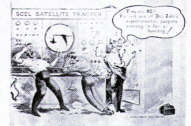 By Saturday noon, October 5. our small select group of Signal Corps R & D personnel at Fort Monmouth knew their jobs. They also knew that no overtime was authorized, and knew, furthermore, that they were to arrange, within their own resources, ways, and means for keeping
By Saturday noon, October 5. our small select group of Signal Corps R & D personnel at Fort Monmouth knew their jobs. They also knew that no overtime was authorized, and knew, furthermore, that they were to arrange, within their own resources, ways, and means for keeping
their respective parts of our new research program running at 24 hours a day, seven days a week, until we knew all there was to be learned from the mysterious electronic invader carrying the hammer and the sickle.
Hans Ziegler was assigned the role of USASRDL Task Master, alias Simon Legree, but working with volunteer slaves. Norman Field was anointed as his Man Friday. My office was “accepted” as Headquarters through “squatters’ rights” protocol, and Hans was merrily on his way toward a new U. S. Government marathon work-record of a 400-hour month with your author providing the aspirin and a few slaps on the back thrown in for extra.
Communications Department with Bob Kulinyi and Lloyd Manamon directing, soon had our Deal site listening and recording both frequencies with Collins R-390’s and R-220’s. Fred Dickson alerted his global Radio Propagation Agency potential, and soon receivers at the ionospheric stations at Adak, Alaska. Grand Bahama Island, Fletcher Ice Island (T-3) in the Arctic Ocean, White Sands, N. M., Thule, and Okinawa were gathering data around the clock. “Bud” Waite. of Antarctic fame, started recording events with a receiver hie had at home. Our Surveillance Department tuned up the Diana Moon Radar, and our Meteorological Division put another special receiver on the air. Our Frequency Control Division started checking frequencies, Doppler shifts, etc., against masers. no less. Even the Army’s Paul Siple in the Antarctic was listening and recording.
But perhaps most important of all during these early hours on October 5 were the efforts of a few of our Countermeasures people operating an experimental direction-finding station at Collingswood, N . J. In the open, and in freezing weather, Bill Gould, Harold Jaffe, and associates, day after day; all through the long nights, week after week, gave out bearing information–information vitally needed by the Vanguard Computing Center at NRL to determine orbits and make predictions. Yet, the Soviet had kicked off, but before we could really play in the game, we first had to find the ball.
For weeks, Ziegler called the Vanguard Computing Center at least every recorded orbit, and often two or three times in between, and on many occasions kept the toll line open as Alpha completely circumnavigated that bit of cosmic dust we call Earth. Some people, looking for a smile, even accused Hans of having bought a share of AT&T stock and trying to run up his dividends.
The Vanguard Computing Center at NRL was, of course, flooded with thousands of phone calls from all over the U. S., but just hearing the signal soon had little orbital determination value. Until optical fixes from the Smithsonian, Moon-Watch and the Minitrack System started operating, the direction-finding data from Jaffe were all-important, and we fed his angles and time to the greedy computer in Washington as fast as we gathered them.
But it was not easy, and peculiar situations often arose. For example, as the orbit was first being roughed out, a “mysterious force” (quoting blazing Washington newspaper headlines) suddenly appeared, pointed to a two-minute discrepancy in predicted orbit time. Alpha seemed to be where it wasn’t. Were there really new forces? Could Newton and Kepler possibly have been wrong?
This two-minute differential was very conspicuous in the data our direction finder reported to the Computing Center. Accordingly, a decision was made in Washington to try this correction in the machine. But somewhere in the transmission of our data, the sign was unfortunately reversed, and when compensation using these data was attempted, the discrepancy jumped from two to four minutes, and “the force” thus grew bigger and ever more mysterious. The computer, however, was given another chance with the suggested correction applied in the reverse direction. Immediately, all was well. Our bad actor was only someone’s sleepiness, the 24-hour working day being a novelty even in Government circles. Kepler again became a respected authority.
As the long days and nights passed, finally out of confusion came the Sputnik ephemeris, and the IBM brain at the Vanguard Computing Center finally had all the input needed. The little intruder became a visible and scheduled sunrise and sunset spectacle to those of the nation who (text missing on the original).
On a very personal side: One frosty morning early in October, I set a bridge table on our lawn and shiveringly served orange juice, wheat cakes, bacon, coffee and/or milk to my wife and three youngsters (2, 6 and 8 years). Precisely at 0551, I was saying that it should be in the north, moving across our view toward the south, when Chris (6) interrupted me and said, “Dad, what is that twinkling moving star?” He pointed to the north. It was Alpha, all right.
For several minutes we breathed the exciting air of adventure and discovery, as one of the greatest of all man-made spectacles majestically sailed across our view. Few in the U. S. had yet seen the satellite, so we were particularly thrilled. Hours later, Buzzy, the oldest, gave a lecture on satellites to his third-grade class, while Chris lectured similarly in the first grade. The baby was asleep again.
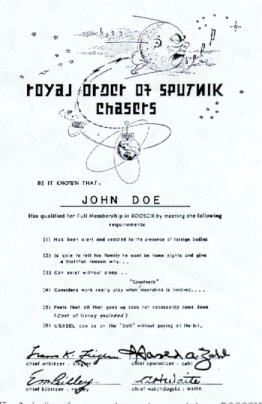 By, now, our little Army volunteer group at Fort Monmouth had grown to a strength of 120 people and the ROYAL ORDER OF SPUTNIK CHASERS (ROOSCH) came into being-sweat, tears, success, failure, no sleep, no extra compensation (and who cared), family problems, curiosity, and patriotism all wrapped into one. But even with their tiredness. the volunteers acquired a sense of new importance and felt proud to be aboard, sailing into the unknown of outer space electronics. With added help now coming more easily, we listened and watched as Sputnik’s batteries started to run down. We knew our long vigil would soon end, with the forgotten word of sleep wending its way back into our vocabulary -we hoped. Our primary interest now became one of learning, particularly propagation. as much as we could from the two excellent mobile transmitters so kindly provided, at no cost, by the Soviets. Important data were being accumulated at the biggest bargain rate since Marconi turned on his first spark transmitter.
By, now, our little Army volunteer group at Fort Monmouth had grown to a strength of 120 people and the ROYAL ORDER OF SPUTNIK CHASERS (ROOSCH) came into being-sweat, tears, success, failure, no sleep, no extra compensation (and who cared), family problems, curiosity, and patriotism all wrapped into one. But even with their tiredness. the volunteers acquired a sense of new importance and felt proud to be aboard, sailing into the unknown of outer space electronics. With added help now coming more easily, we listened and watched as Sputnik’s batteries started to run down. We knew our long vigil would soon end, with the forgotten word of sleep wending its way back into our vocabulary -we hoped. Our primary interest now became one of learning, particularly propagation. as much as we could from the two excellent mobile transmitters so kindly provided, at no cost, by the Soviets. Important data were being accumulated at the biggest bargain rate since Marconi turned on his first spark transmitter.
But Ivan was cruel!
We had just caught up on loss of sleep from Alpha when he launched Beta, and Laika’s heartbeats throbbed as loudly through our loudspeaker as did ours through our shirts. Actually, we heard Laika’s stethoscopic signature briefly during only one of the earliest orbits, but it was an unmistakable signal (0429-0-130, November 3, 1957).
Army Signal Corps personnel were the first to hear this new intruder, Beta, as it came over the North American continent. We were ready and alert technically, albeit, and ironically, our own Technical Information Staff lacked official permission to release the news of its entry over our continent, and the hour was 0250. The Pentagon was not yet ready for the space maze.
George Moise of our Technical Information Division quite innocently, however, called one of the wire services and asked, “Did anyone hear the new Russian satellite over the U. S. before our reception at 0250 hours’” This was just a simple question, of course, and the wire services are supposed to give out information.
“What!” came the reply. “No-but, but, but you’ve got a story!”
And so he did. But our George was saved from possible reprimand, for almost simultaneously, Len Rokaw, responsible for the harassment of three echelons of Pentagon hierarchy, received official permission to release the facts on our first hearing. Rokaw and Moise certainly owe beers to an unnamed General (and two Colonels in chain-of-command) who was awakened at his home at 0300 and who authorized the news release. And there are those, too, who say they heard the OK given twice, once by phone and then again, 10 minutes later, as the sound wave from Washington arrived in New Jersey. From such stuff comb commendations or reprimands; it’s the way the coin falls.
But again, just hearing the signal hardly awakened the interest of the Computer in Washington. It yawned and with mathematical preciseness said, “Serve me with apogees, perigees, angles and time, please. I am not clairvoyant.” And the computer had caused, since actually for a few early hours, some U. S. radio broadcasters had the satellite going in a peculiar and most unusual direction. Ziegler was very worried over the peculiar course.
“Look at Jaffe’s direction-finding data, Harold,” he said to me. “You heard the last broadcast-something is lousy!”
And it was!
Our first bearing data were then quickly sent to the Vanguard Computing Center where, cornbined with Mini-track data corning in, the course of the satellite was established and then correctly and officially announced. We are sure. however, that the theoretical acceleration involved in our paper reversal of the direction of this particular bird slid not bother Laika much. Had she known, she probably would have been very much amused by the entire incident.
After all, “hot dogs” are an American invention.
And so it went. We finally established an authorized project. Military personnel were brought in to help in our new 24-hour tracking schedule. At Deal alone, the “Mayor” of that activity, Lloyd Manamon, recorded many miles of tape containing good data-priceless for future reference. In fact, today the Deal library, of all satellite recordings, is the most complete in the world.
It is now 1960. Many tracking systems the world over can now do, and do much better, the things we fought so hard for over a period of 40 days in late 1957. We even do it now almost “stereophonically and in full color.” We rest while the receivers and recording equipment work on almost automatically, and children of ROOSCH parents again recognize their fathers. But before I close, I must point out that the Army Signal Corps group was only one of several others in the U. S. which we know experienced the same emotions and worked as hard toward the same end as did we. I am sure the chronology of these activities would add fascinating chapters to the history of the first earth satellites. But they are separate stories and should be written by others.
Page created March 27, 1999 – Reprinted with the kind written permission of the Zahl family.
We Need Your Help! Volunteer with Us.
Join our mission to preserve historic Camp Evans and teach the public about science and history.
Sign up to join our team of volunteers and start on your own mission today.
InfoAge Science & History Museums
2201 Marconi Road
Wall, NJ 07719
Tel: 732-280-3000
info@infoage.org
webmaster@infoage.org
